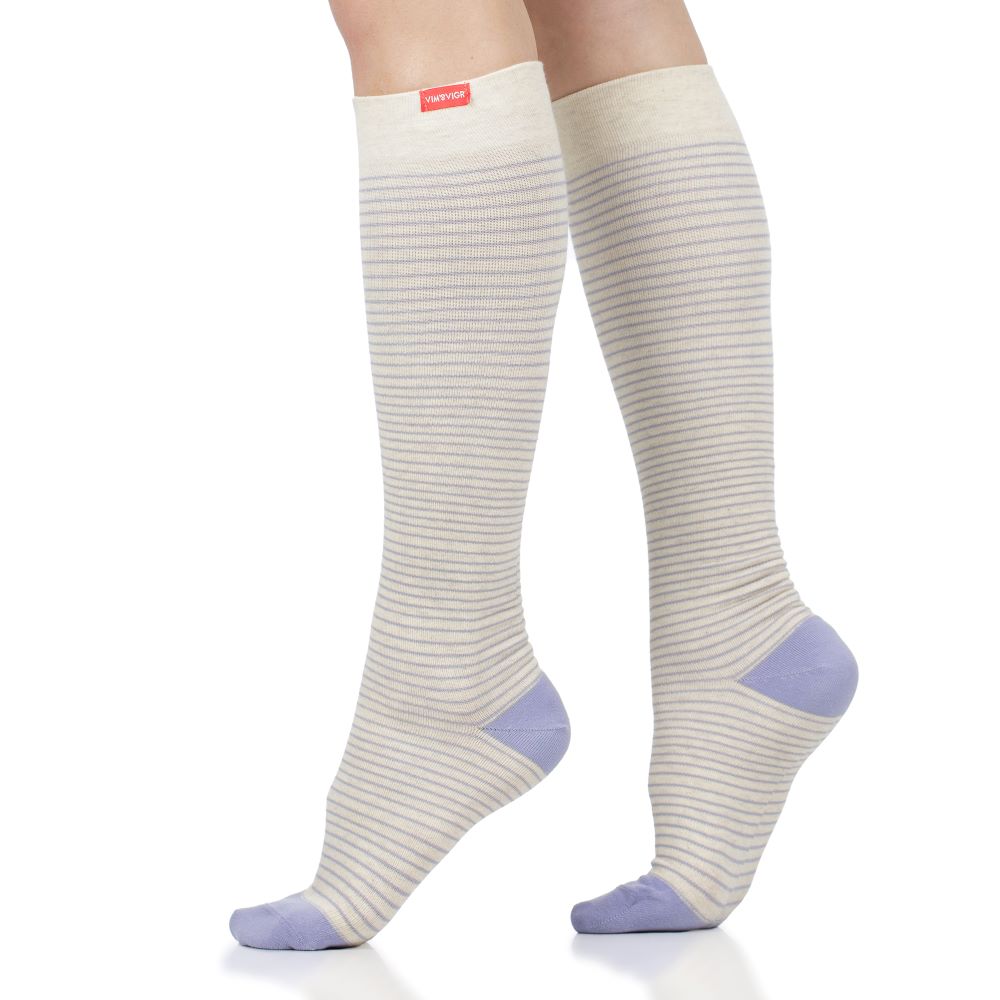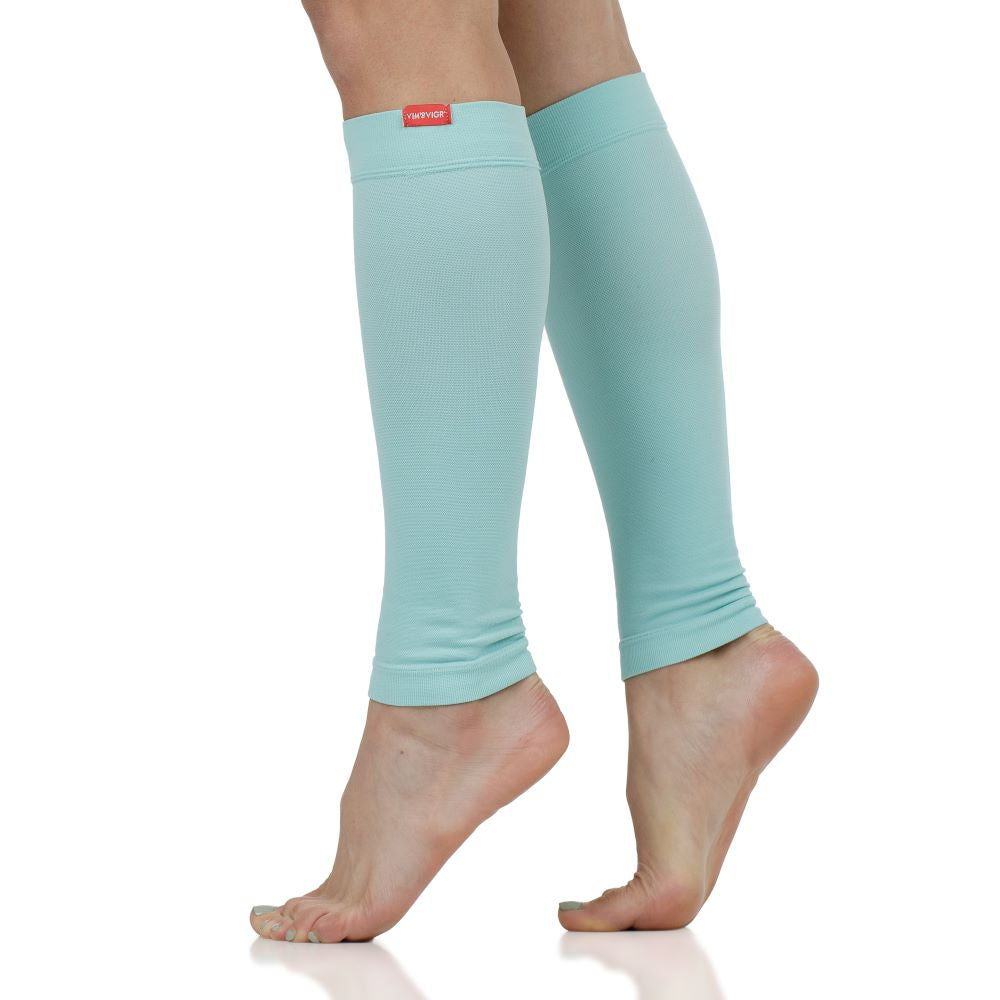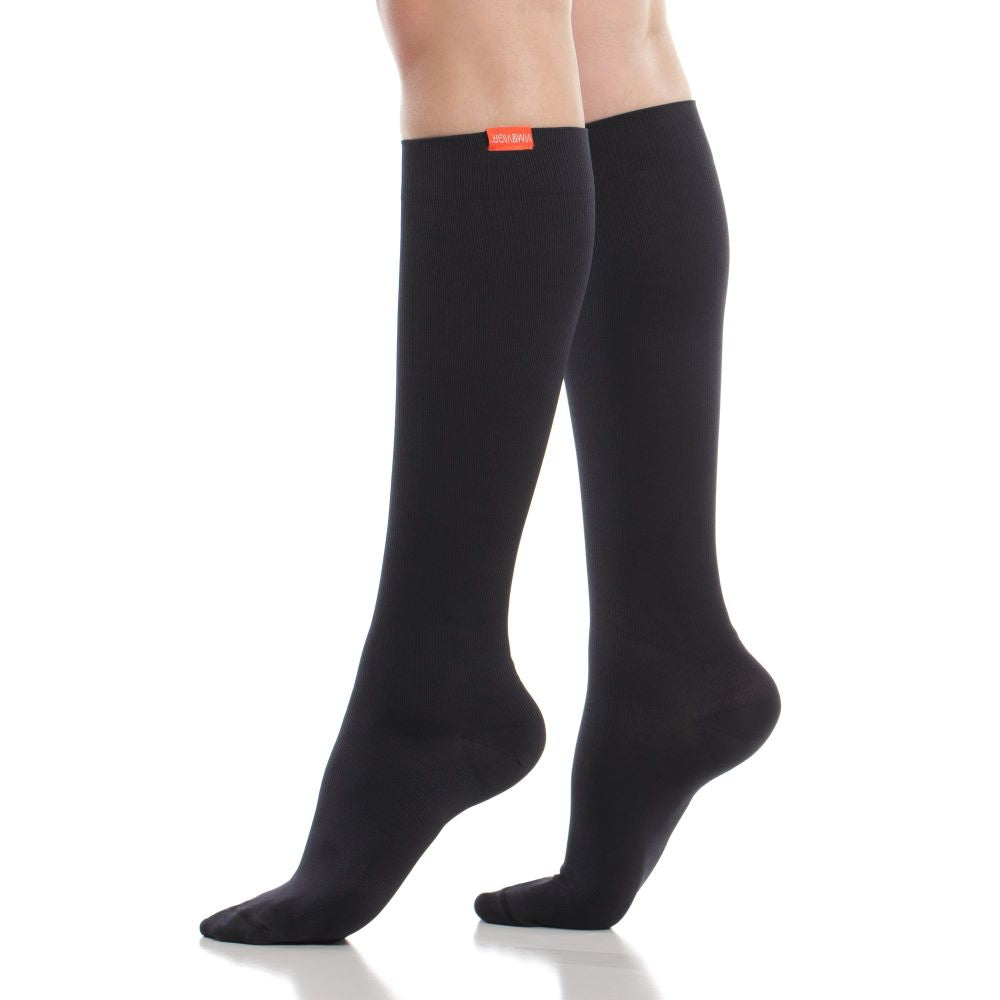The Benefits of Self Leg Massage + How to Do It
What are the benefits of a leg massage?
Besides the obvious relief of getting a massage, there are great health benefits to releasing the knots and aches in your legs. We use our legs for most of the day, keeping them in tip top shape can make our lives easier and more comfortable. The benefits of a leg massage are as follows:
- Improve Circulation
- Speed Injury and Workout Recovery
- Treat Varicose Veins
- Reduce swelling and Edema
- Relieve Leg Pain, Achiness, and Fatigue
- Improve the Symptoms of Plantar Fasciitis
Improve Circulation
When you give yourself a massage, you may see your skin start to flush and turn red. That is blood rushing to the massaged area which can help promote recovery and improved circulation. Healthy circulation is paramount for leg health. Poor circulation is the cause for conditions like Edema and DVT. Another way to improve circulation outside of massage is incorporating compression socks into your wardrobe. Compression socks apply gentle pressure to keep a healthy flow of blood and refresh muscles.
Speed Injury and Workout Recovery
With improved circulation there will be more blood flow to the muscles. Blood is a vessel for oxygen to be deposited back in the muscles. This is how massage and compression socks help to speed up recovery from injury or a hard workout. The increased oxygen leaves the legs feeling refreshed and light.
Treat Varicose Veins
Suffering from varicose veins can be painful on top of the aesthetic effects. While preventing vein disease from worsening, most patients are also looking for ways to relieve the symptoms of varicose veins, which include aching, swelling and cramping. Once again circulation is the key here. Increased circulation from a massage can help prevent and relieve varicose veins.
Read more on how compression socks help varicose veins here.
Reduce swelling and Edema
Edema occurs when small blood vessels called capillaries in the body leak fluid. This fluid leaks into surrounding tissue and saturates it, causing swelling and discomfort. This leaking can have many causes, but mainly putting strain and being on your feet all day can inflame the capillaries. Symptoms of edema are as follows, swelling or puffiness of the tissue directly under your skin, especially in your legs or arms, stretched or shiny skin, skin that retains a mark after being pressed, increased abdominal size.
Read more on how compression socks help edema here.
Relieve Leg Pain, Achiness, and Fatigue
As you are likely putting together, good circulation can be magical for your overall health, and leg massage helps the circulation in your legs to improve. If your legs feel heavy or tired, compression socks or a good leg massage (or both!) Could be the answer you are looking for.
Improve the Symptoms of Plantar Fasciitis
Signs of plantar fasciitis can include symptoms such as a dull or sharp pain in the middle of your foot or on your arch and heel. Because these symptoms can be easily associated with other conditions, make sure and speak with a qualified podiatrist before proceeding with treatment.
Massage can help to relieve some of the pain associated with plantar fasciitis by increasing blood flow to the area.
Read more on how compression socks help plantar fasciitis here.
Self-Massage Techniques for Legs
Now that we have covered the many benefits to giving yourself a leg massage, you may be wondering how to give one. There will be more instructions in the next section, but first lets go over the basics.
Squeezing and Kneading Motions
Kneading helps reduce muscle tightness by increasing the temperature of soft tissues, increasing blood circulation, breaking down adhesions, and decreasing tone. Kneading stimulates the increase of temperature by friction against the skin. When temperature increases, the muscle fibers relax and loosen allowing more movement. Kneading also reduces tightness by applying pressure to knots and adhesions. Kneading can break down knots and adhesions by aligning the fibers back to normal form.
Chopping or Percussion Motions
Beating and pounding is performed on larger muscle areas of the body, i.e. thighs or buttocks. This massage technique is performed by striking large muscle areas with loosely clenched fists. Beating and pounding aims to produce a deeper effect to an area compared to other percussion techniques. Beating and pounding is used to stimulate blood circulation to an area, reduce and soften areas of adipose tissue and increase muscle tone.
Stroking Motions
These motions are used in Swedish massage to improve circulation and relax the muscles. There are 6 different types of strokes and techniques for giving a massage. Not only are these motions relaxing, but they also increase blood rushing to the area. This can promote faster healing and relaxation around the area.
Rolling with a Ball or Foam Roller
Finally, rolling out with a foam roller is a simple way to improve circulation and release knots in your muscles.
How to Massage Your Own Legs and Feet
We asked Katie Ferraro, a group fitness instructor in LA, to share her best leg massage tips with us.
“When you know you’re in for a long day on your feet, you want to be prepared. Besides having a reliable pair of shoes in your arsenal, creating a routine of stretching and massage is a great way to get your body ready for any activity that may come your way, and help you bounce back fast so you can keep up with an always busy schedule. Here, we break down a quick 15-minute massage routine you can incorporate at the beginning or end of your day to give your legs the boost they need to carry you through.
In order to properly give yourself a leg massage, no tools are necessary. However, having a foam roller and a lacrosse (or massage) ball, will be a real game-changer. Really any type of hard ball —- like a softball or a baseball… —- would work as a substitute. As for the foam roller, anything cylindrical and sturdy. like a can of vegetables, will do the trick.
Now that we have the tools, let’s talk about the technique.
How to Massage Your Feet
When my legs feel heavy, I often find that the most relief comes from the soles of my feet, so let’s start there. Either sitting or standing, put the lacrosse ball under your foot and roll the ball under the middle part of your foot. Apply pressure by pushing down on the ball. This isn’t the most comfortable feeling at first, mostly because we tend to take for granted how hard our feet work on any given day. But as you go, you’ll probably feel the release of the muscle, ultimately leading to sweet relief.
How to Massage Your Calves
From there, let’s move to the calves. Continuing with the lacrosse ball, sit on the floor with your legs out in front of you and cross your ankle over the opposite leg, just above the knee. Take the lacrosse ball in your hand and start rolling it in a circular motion over your calf muscle. Apply pressure as needed. Another way to massage your calves with the ball is by putting the ball on the floor and rolling over the ball as demonstrated in thisvideo.
Still sitting on the floor with your legs in front of you, grab the foam roller and place it under your calves. Crossing one ankle over the other, move the foam roller up and down your calf, focusing on the points that are “sticky,” using the weight of your top leg to apply pressure. Spend a few minutes on each leg.
If you don’t have a tool to use, no sweat! Your hands can do the trick. There are three basic techniques you’ll use: gliding, pressing and drumming. With gliding, you’ll take sweeping strokes up and down your legs with your palm open. Pressing is more of a squeeze, and drumming is exactly how it sounds. Runner’s World goes in depth with all of the techniqueshere.
How to Massage Your Hamstrings and Quads
Since your hamstrings and quads are big muscles, your foam roller will come in especially handy as you work your way up the leg. While you still have your foam roller under your legs, move it up to the top of your hamstring. Again, move the roller down your hamstring until you find the part that is particularly sore, using small motions to massage the knot. If you come to a place where you feel a very specific knot, you can also use a lacrosse ball to dig a little deeper.
Once you’ve given your hamstrings some love, flip over and get into your quads. Facedown, using your elbows for balance, get into the top part of your legs, one at a time, using the same techniques as outlined above.
Doing these massage techniques for 10 to 15 minutes will invigorate your legs and make them feel lighter. Besides, self-massage is severely underrated, especially after a long day on your feet. Your legs take you a lot of places, so consider dedicating time to give them a little TLC!
Any good massage routine can also be boosted by compression socks. By design, compression socks boost circulation, help blood flow to the heart and reduce pain and swelling in your legs and feet.”
Enhance Your Results with Compression Socks
Poor circulation is a common cause of heavy legs and hurting legs. Conditions like Edema can make this feeling more prominent and cause other issues. Essentially, in circulation, blood has to fight against gravity to get back up to the heart, throughout the day this gets harder for the body to achieve. An easy fix for this is to incorporate compression socks into your lifestyle.
Compression socks will not only enhance the results of your leg massage, but also prevent some pain that may make you feel like you need a massage. Compression socks gently hug your legs and move blood through your muscles, leaving you refreshed and comfortable. Many athletes use compression socks to recover from intense workouts and training.
Our compression socks are not only stylish, but they come in 4 unique fabrics that make it easy to wear them all day with whatever your personal style is. Our 4 unique fabrics are as follows:
COTTON
- 200 needle-count
- Premium natural cotton fiber
- Multi-dimensional weave for comfort and breathability
NYLON
- 400 needle-count for strength & flexibility
- Multi-dimensional weave for breathability
- Superior strength and stretch
MOISTURE WICK NYLON
- 400 needle-count for superior flexibility and comfort
- Draw sweat and moisture off of skin
- Lightweight fabric stretches wide while maintaining strength
MERINO WOOL
- 200 needle count
- Sustainably sourced, high-quality, double-covered elastic fibers
- Naturally breathable, moisture-wicking and odor-fighting
Shop stylish and functional compression socks for men and women online at Vim & Vigr.



















Leave a comment